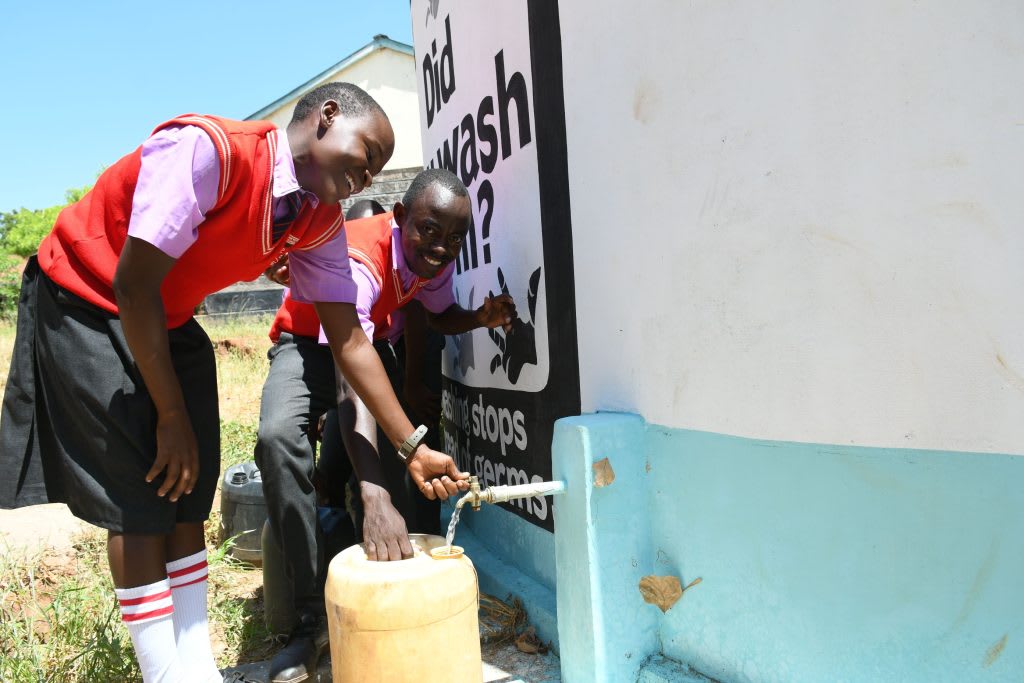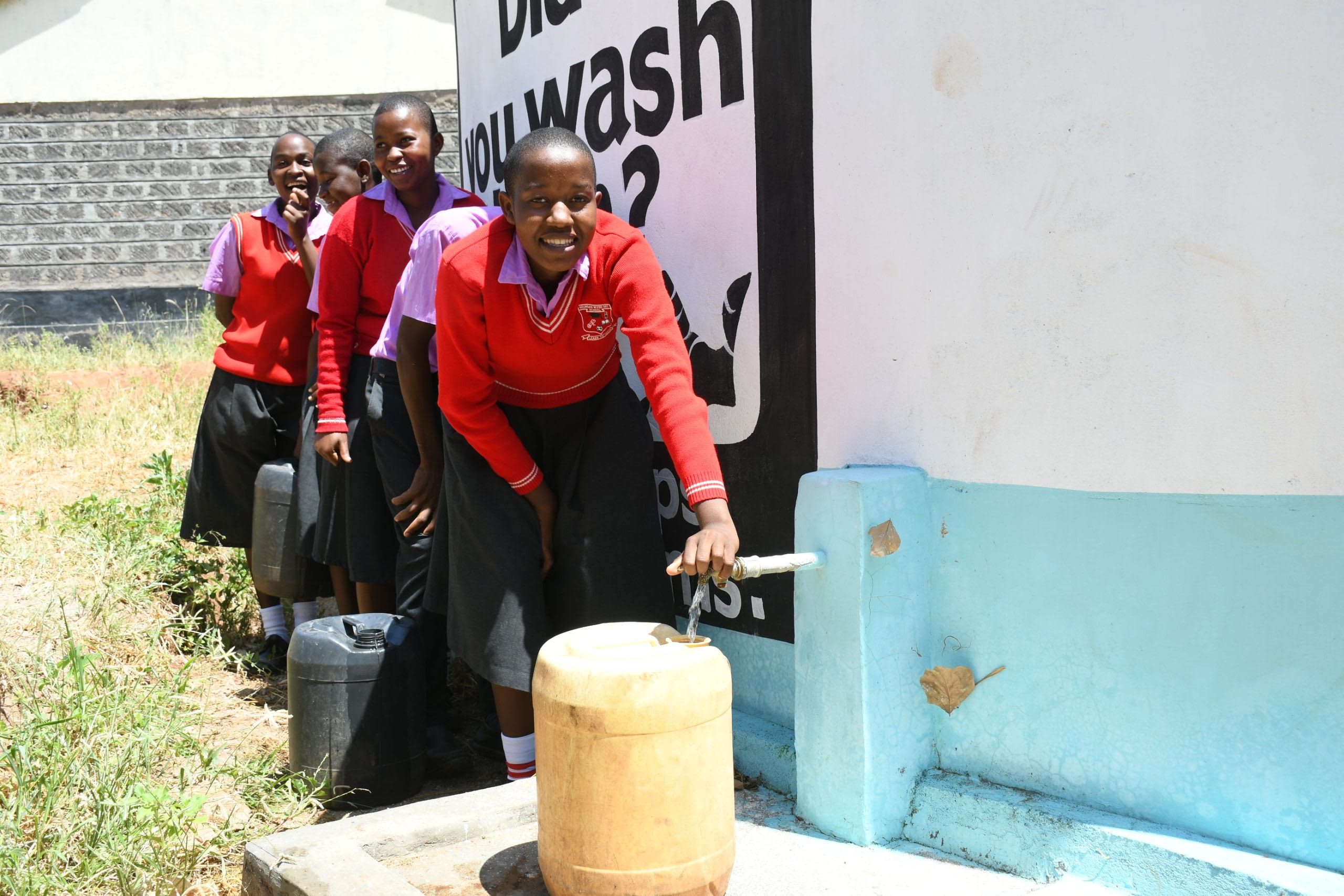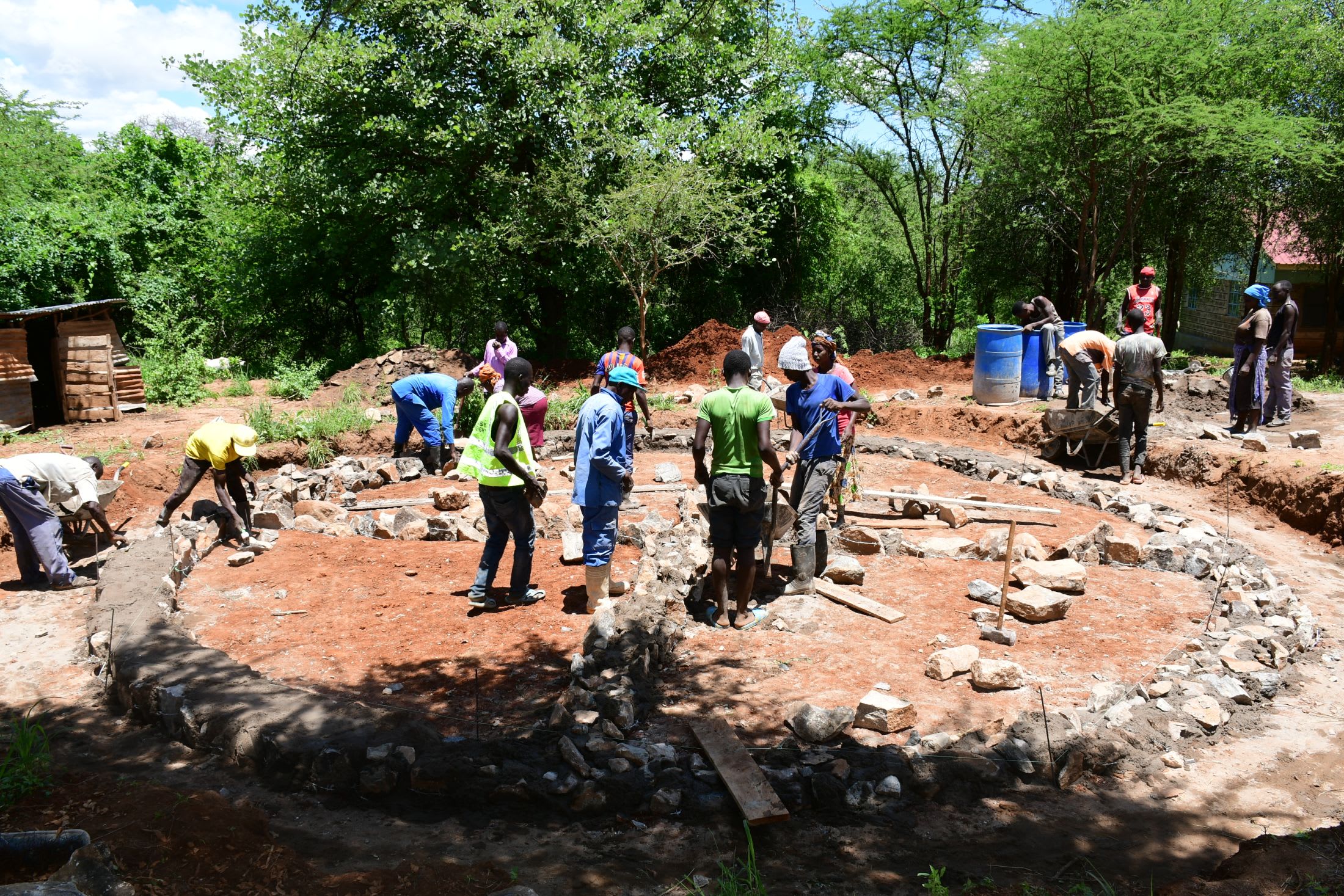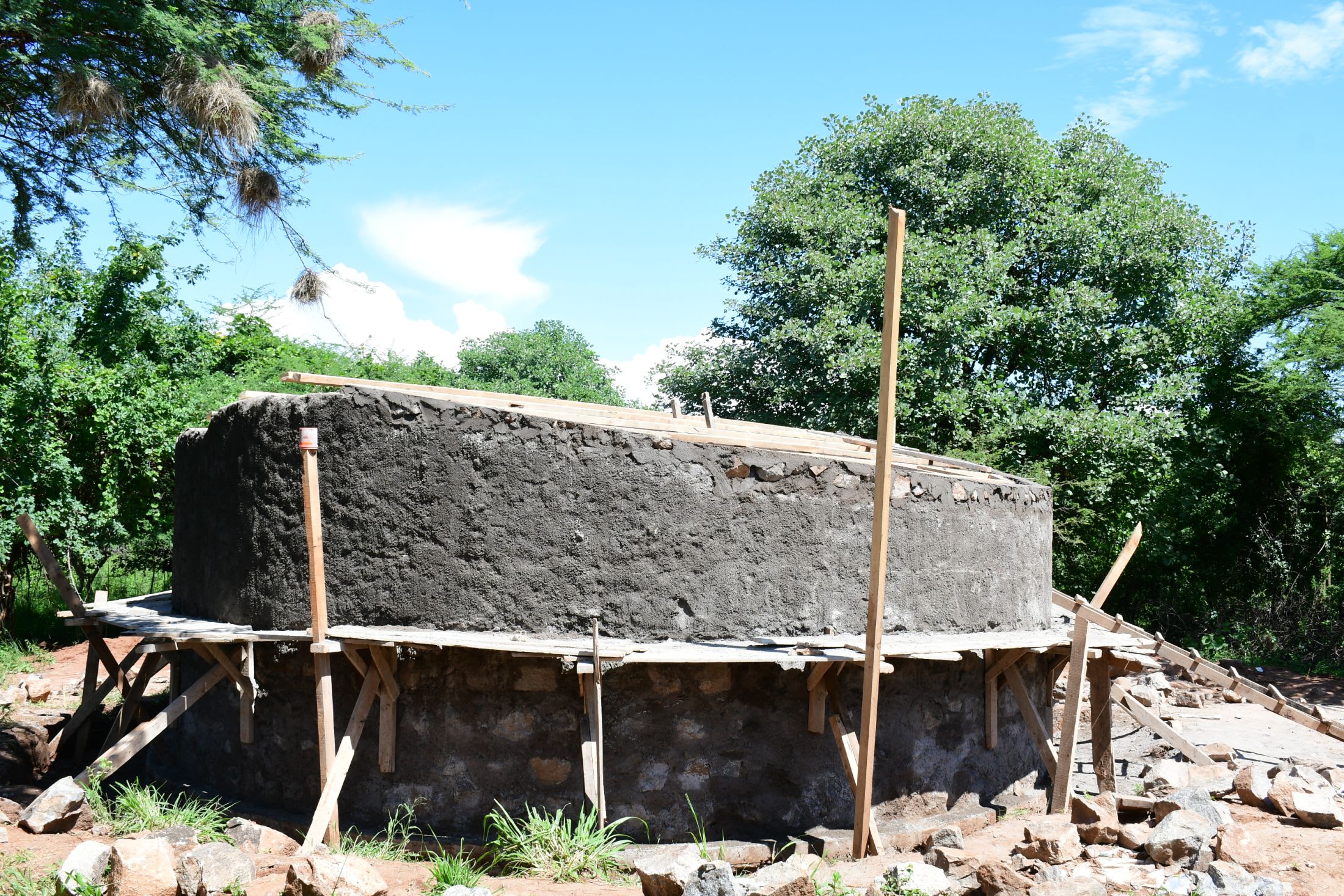The 167 students and staff of Ngungani Secondary School struggle to access sufficient water daily. Although they have a few possible water options, they all present challenges that make collecting enough water incredibly difficult, especially in this semi-arid climate.
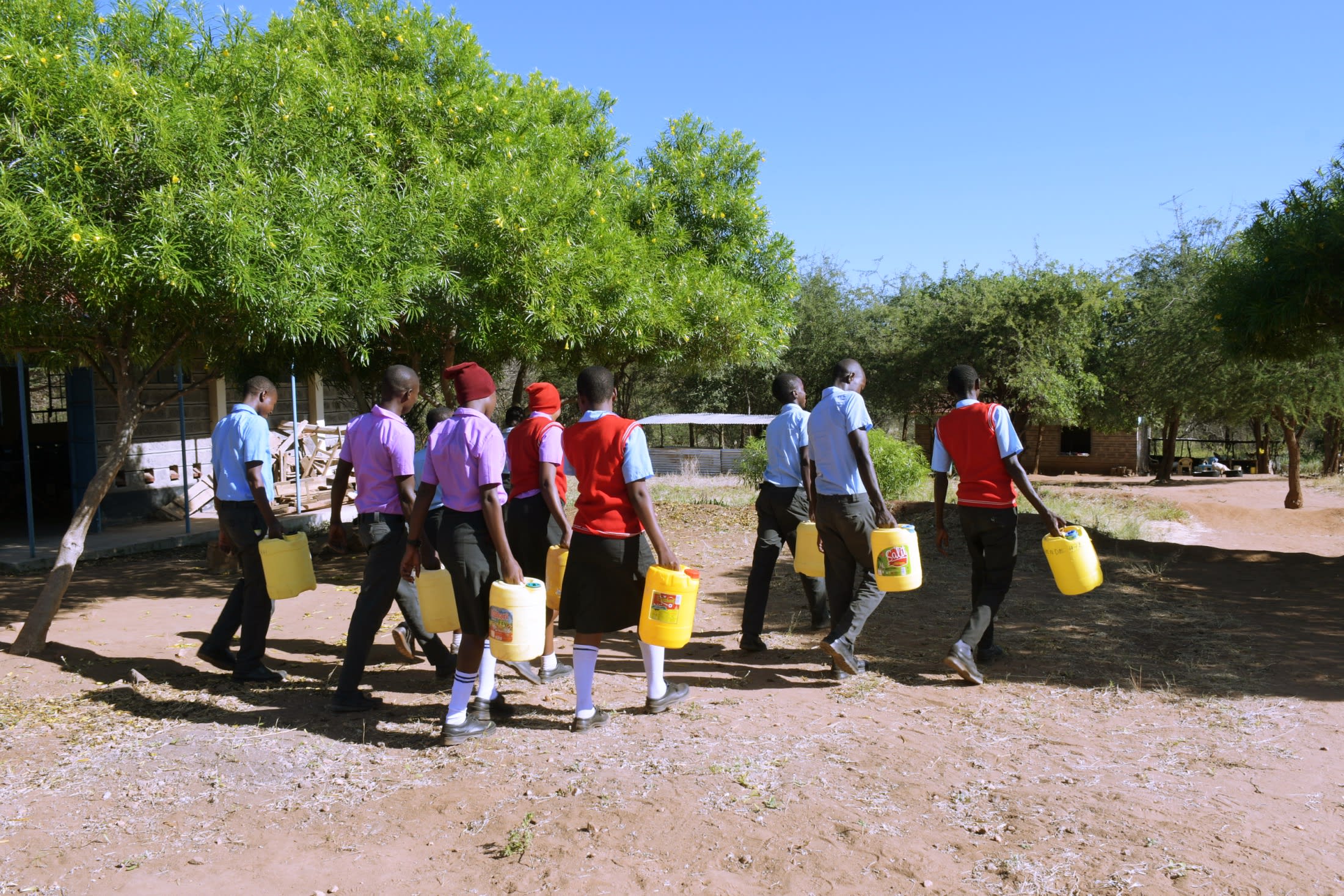
Their primary water source is small rainwater tanks on the school grounds, but when they fill, they run dry quickly because they are not large enough. The next option is to collect water from scoop holes that only offer water at particular times of the year. And when neither of those is enough, the school must buy water from a vendor who delivers water collected from further away sources weekly, which raises school fees that many families already struggle to pay. This increase in school fees often means children have no choice but to stop attending because their families can't afford it.
Field officer Alex Koech said, "The existing rainwater tanks cannot provide water for the entire school population because of their meager capacity. Students are forced to fetch water from a scoop hole located off the school grounds at Thua River, about 5 kilometers (3 miles) away." A representative photo of a scoop hole can be seen below.
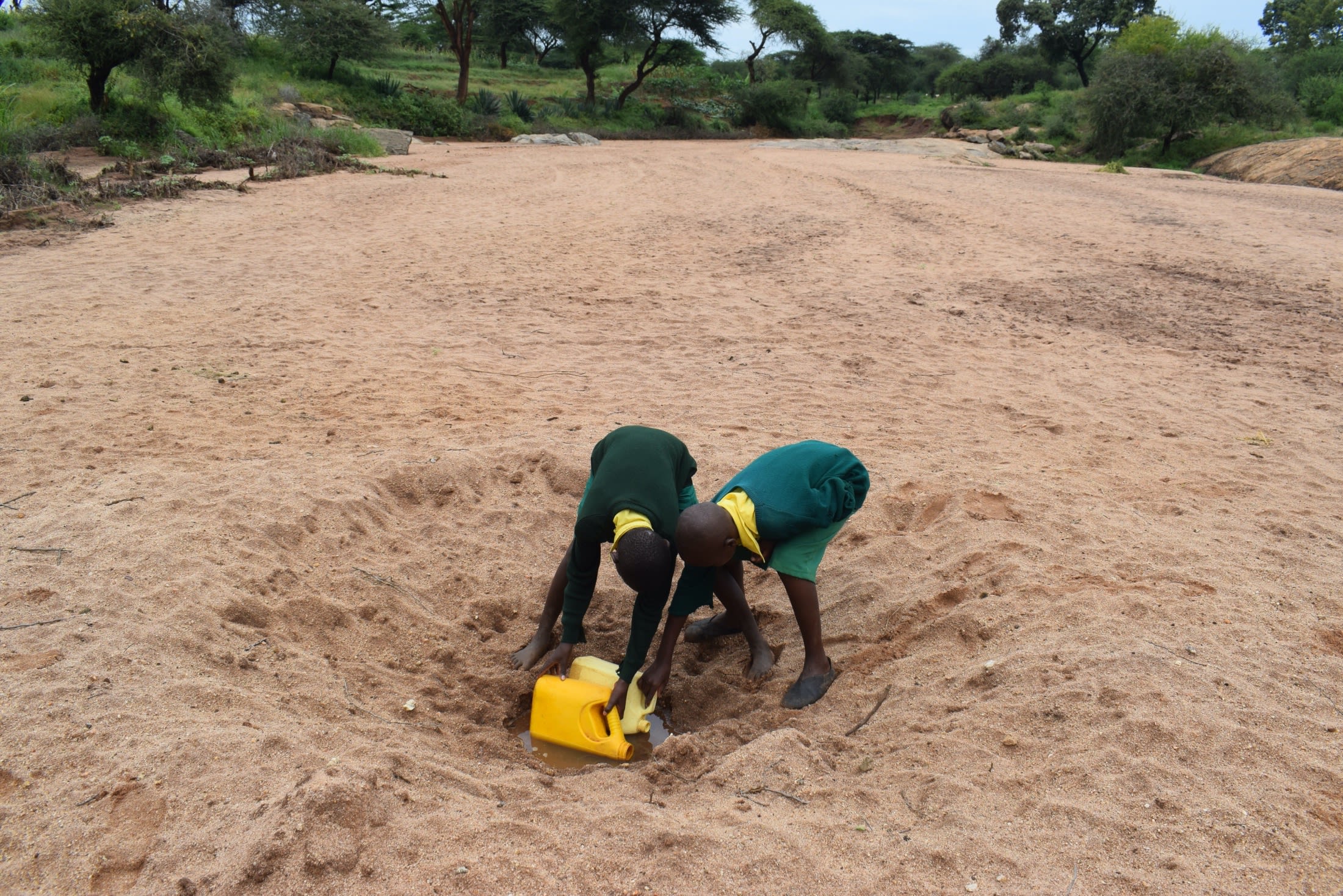
"The scoop hole is shared with the rest of the community members and runs dry during long droughts. It is also shared with the livestock that excretes in and close to the scoop hole, causing water contamination and, ultimately, water-related infections. The water is also not enough for the community and students because it is seasonal and mostly overcrowded," Alex continued.
31-year-old Teacher James Manzi (shown below) said, "The water expenses are very high, and parents have to pay for it through the school fees. I have had to teach on several occasions while thirsty because there is no water in school. This makes my voice hoarse and kills my morale, making students inattentive during lessons. "
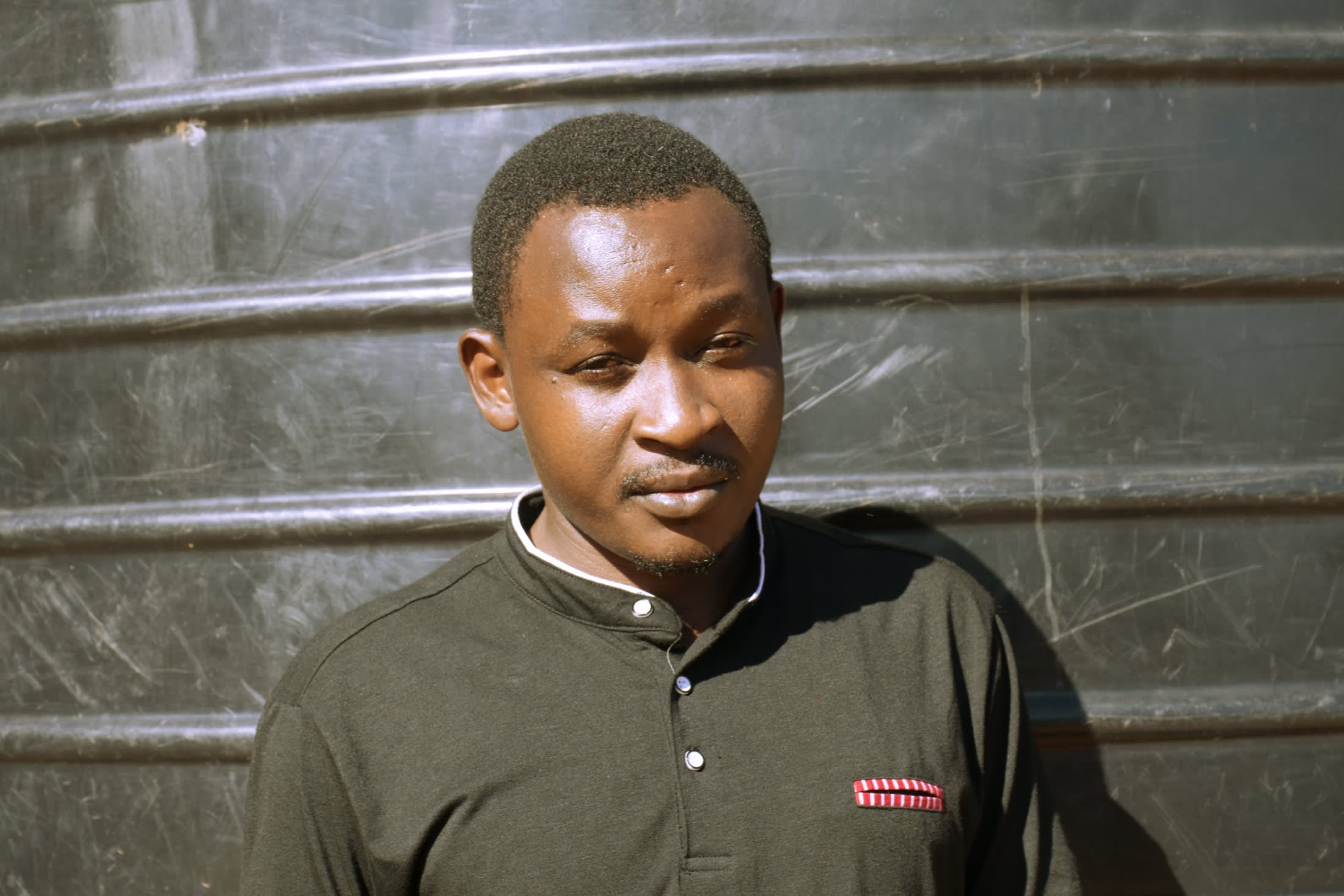
Students and teachers alike bear the burden of thirst at Ngungani Secondary School.
17-year-old Ruth M. (seen below) said, "Walking several kilometers in search of water is exhausting and time-consuming. I arrive at school tired, with my leg muscles burning from the long journey, which makes it difficult to focus in class."
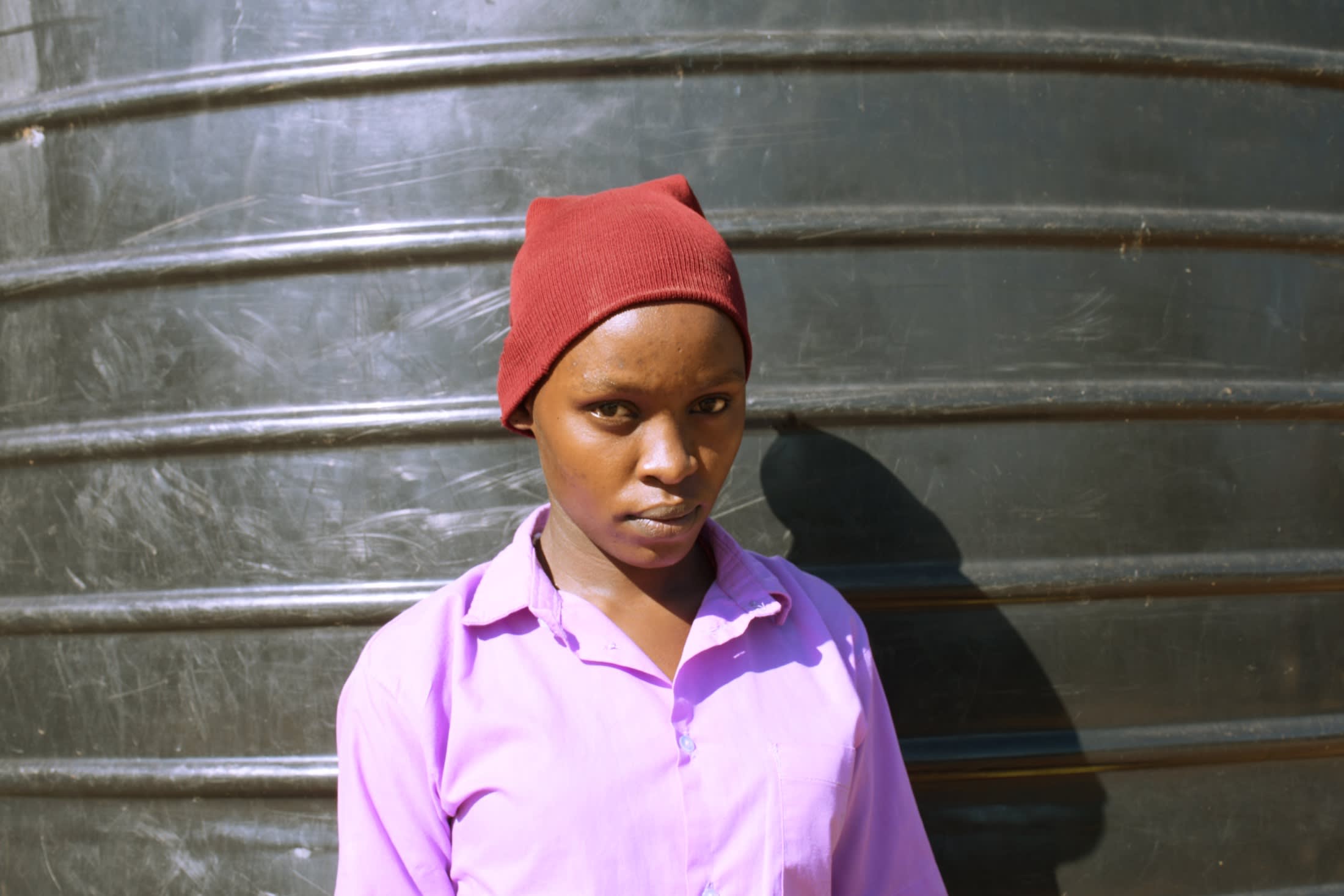
"There are times when there is no water in school, and I have to stay thirsty despite the hotness in the region," she continued.
Students waste valuable time and energy to scrounge enough water for their daily basic needs, interrupting their educations and futures.
"The implementation of a tank in our school means I will easily drink clean water whenever I feel thirsty; I will no longer need to go and fetch water from the distant Thua River," Ruth concluded.
"If we get a tank in our school that sustains us throughout the dry season, we will save on water expenses and use that money to purchase more learning materials. I will also get enough clean water to drink, and my voice while teaching would be better," James concluded.
To solve their water crisis, installing a 104,000-litre rainwater tank with an extensive guttering system is crucial to catch as much rain as possible outside of the dry season. Doing so will empower students and teachers alike to create a better future for their community.
Water at schools is unique, which is why we need unique solutions.
The Proposed Solution, Determined Together...
At The Water Project, everyone has a part in conversations and solutions. We operate in transparency, believing it benefits everyone. We expect reliability from one another as well as our water solutions. Everyone involved makes this possible through hard work and dedication.
In a joint discovery process, community members determine their most advantageous water solution alongside our technical experts. Read more specifics about this solution on the What We're Building tab of this project page. Then, community members lend their support by collecting needed construction materials (sometimes for months ahead of time!), providing labor alongside our artisans, sheltering and feeding the builders, and supplying additional resources.
Water Access for Everyone
This water project is one piece in a large puzzle. In Kenya, Sierra Leone, and Uganda, we're working toward complete coverage of reliable, maintained water sources that guarantee public access now and in the future within a 30-minute round trip for each community, household, school, and health center. One day, we hope to report that this has been achieved!
Training on Health, Hygiene & More
With the community's input, we've identified topics where training will increase positive health outcomes at personal, household, and community levels. We'll coordinate with them to find the best training date. Some examples of what we train communities on are:
- Improved hygiene, health, and sanitation habits
- Safe water handling, storage & treatment
- Disease prevention and proper handwashing
- Income-generation
- Community leadership, governance, & election of a water committee
- Operation and maintenance of the water point
Handwashing Stations
Alongside each water source in Southeast Kenya schools, we also provide three new handwashing stations fitted with three taps each, allowing nine students to wash their hands at once. These will allow everyone at the school to wash their hands without running water. Handwashing is so important to help prevent future water-related illnesses in the school community.
The student health club will maintain the stations, fill them with water, and supply them with soap (which we will teach the school community how to make during the training!).

 Rainwater Catchment
Rainwater Catchment
 Rehabilitation Project
Rehabilitation Project










